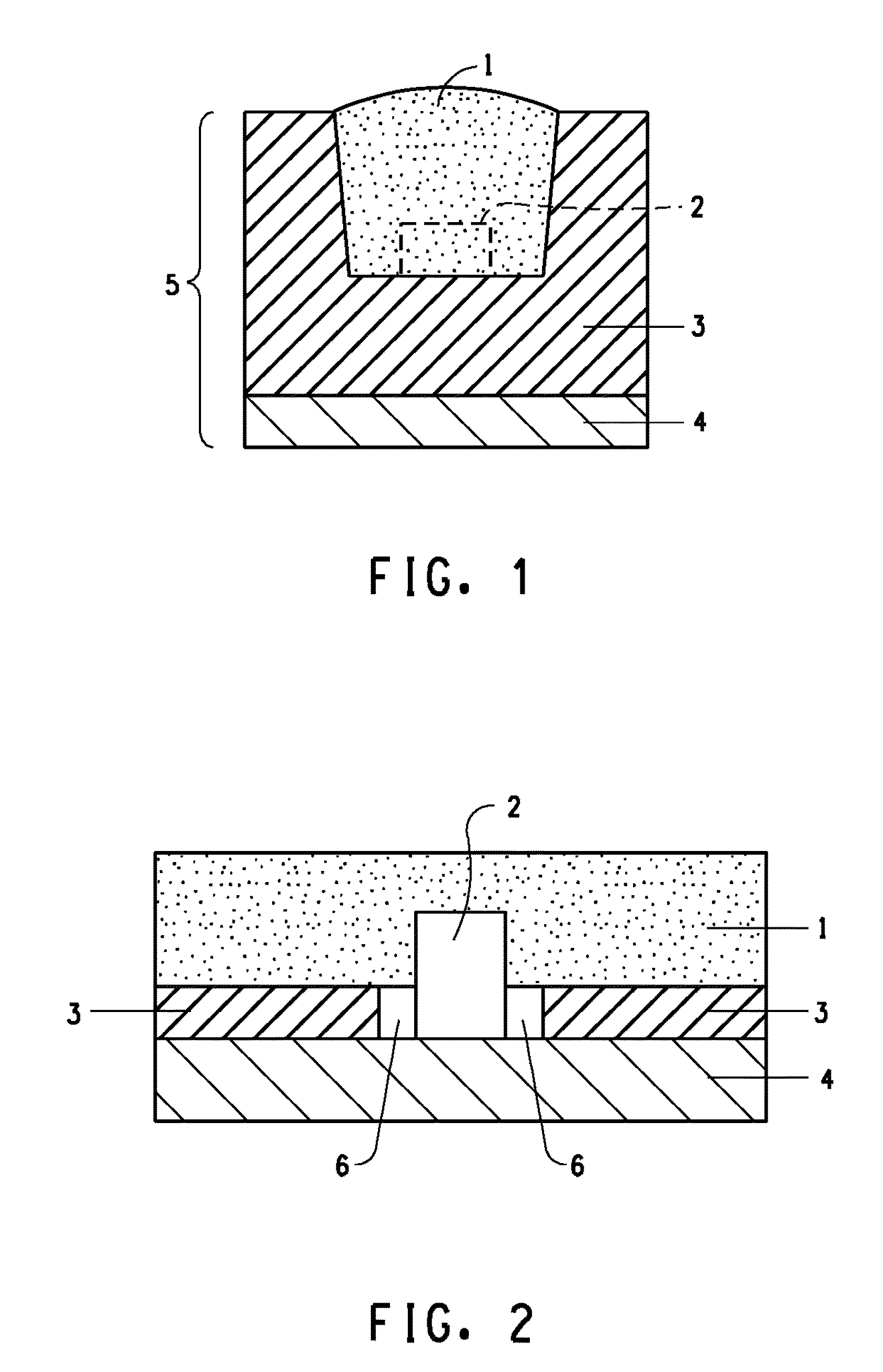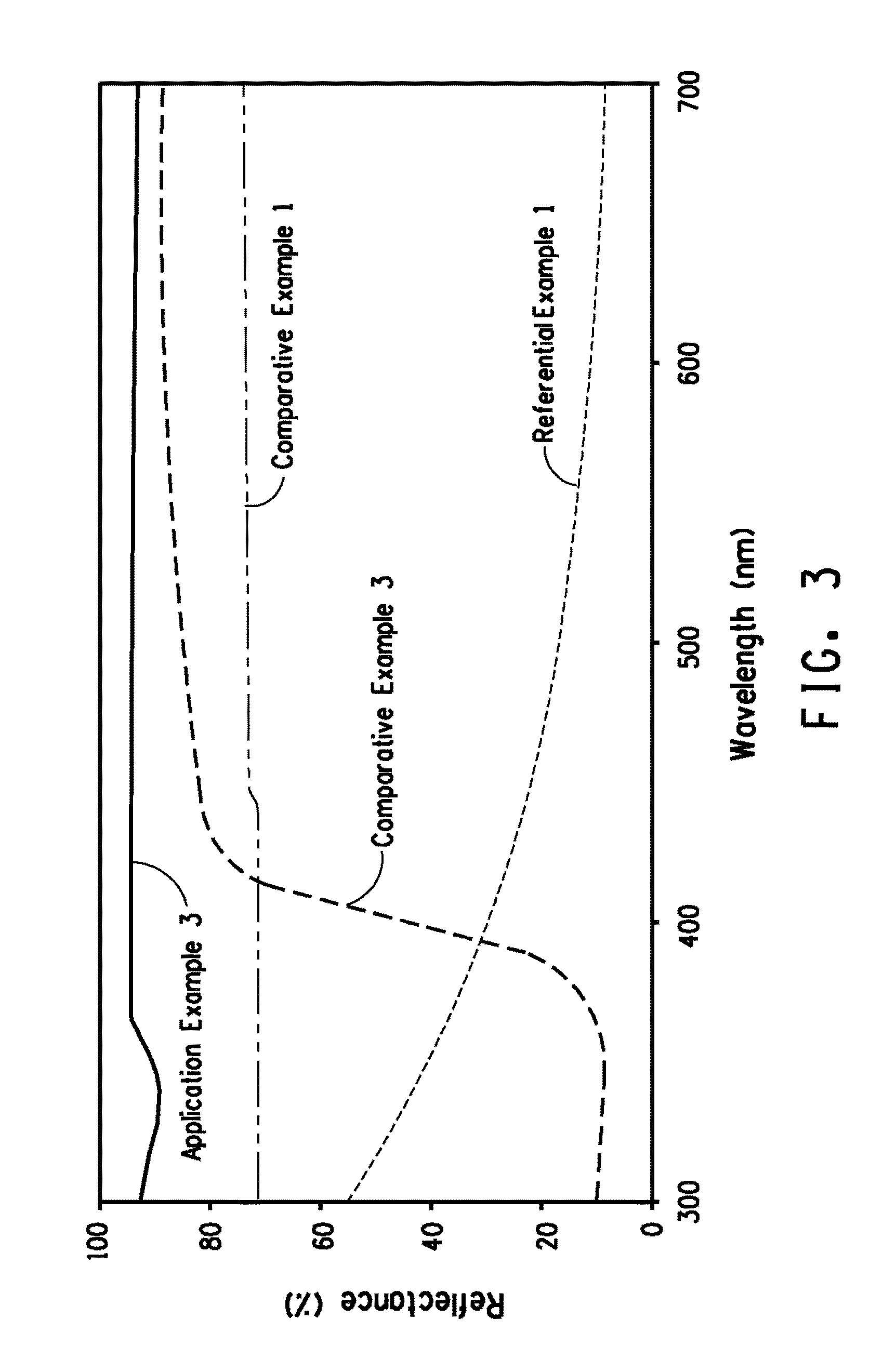Reflector for light-emitting diode and housing
- Summary
- Abstract
- Description
- Claims
- Application Information
AI Technical Summary
Benefits of technology
Problems solved by technology
Method used
Image
Examples
examples
[0053]Next, the present invention will be explained in further detail by application examples and comparative examples; however, the present invention is not limited by this explanation.
[0054]Each property in the present invention was measured by the following methods.[0055]A. Measurement of Properties
[0056](1) Melting Point (Melting Peak Temperature)
[0057]A differential scanning calorimeter (Pyris 1 type DSC, made by Perkin Elmer Co.) was used. About 10 mg sample was weighed, put into a dedicated aluminum pan, crimped by a dedicated crimper, and housed in the DSC body, and the temperature was raised at 10° C. / min from 150° C. to 360° C. At that time, the melting peak temperature (Tm) was attained from the melting curve obtained.
[0058](2) Melt Flow Rate (MFR)
[0059]Using a melt indexer (made by Toyo Seiki Co., Ltd.) with a corrosion-resistant cylinder, die, and piston based on ASTM D-1238-95, 5 g sample powder was filled in the cylinder held at 372±1° C., held for 5 min, and extruded...
application examples 1-3
[0077]Alumina (A16GS) and fluororesin PFA with compositions shown in Table 1 were melt-kneaded at 350° C. and 100 rpm for 5 min by using the melt-kneader (made by Toyo Seiki Works K.K., KF-70 V small-scale segment mixer) in combination of shears in which the phase of five sheets of kneading discs was shifted by 2 pitch, so that mixed compositions were obtained. From the fracture surfaces of the composite compositions (FIGS. 4A and 4B) obtained, the alumina dispersed state was evaluated by an electron microscope. As a result, it was understood that the alumina was uniformly dispersed into FFA. In addition, the composite compositions underwent melt-compression molding at 350° C. to prepare samples with a thickness of about 1.5 mm. The reflectance of the samples was measured at standard temperature. The results obtained were summarized in Table 1.
application example 4
[0078]The composite composition prepared by Application Example 3 underwent melt-compression molding at 350° C. to prepare a sample with a thickness of about 1.5 mm. The sample obtained was put into a hot-air circulation type oven, whose temperature was raised to 150° C., and then heat-treated for 100 h, and the reflectance of the sample was measured at standard temperature. The results obtained were summarized in Table 2.
PUM
| Property | Measurement | Unit |
|---|---|---|
| Percent by mass | aaaaa | aaaaa |
| Wavelength | aaaaa | aaaaa |
| Particle diameter | aaaaa | aaaaa |
Abstract
Description
Claims
Application Information
 Login to View More
Login to View More - R&D
- Intellectual Property
- Life Sciences
- Materials
- Tech Scout
- Unparalleled Data Quality
- Higher Quality Content
- 60% Fewer Hallucinations
Browse by: Latest US Patents, China's latest patents, Technical Efficacy Thesaurus, Application Domain, Technology Topic, Popular Technical Reports.
© 2025 PatSnap. All rights reserved.Legal|Privacy policy|Modern Slavery Act Transparency Statement|Sitemap|About US| Contact US: help@patsnap.com



